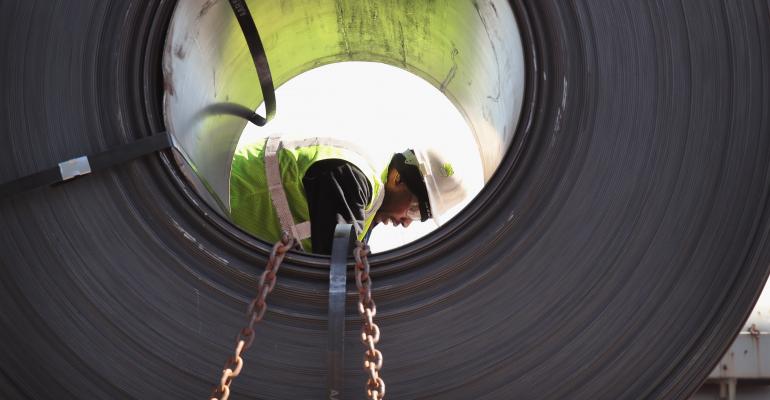(Bloomberg)—Federal Reserve officials leaned toward a slightly faster pace of policy tightening at their March meeting as their growth outlook and confidence in hitting their inflation target strengthened, according to minutes of the gathering released Wednesday.
A number of officials viewed a stronger economic outlook and greater confidence for higher inflation implying “the appropriate path for the federal funds rate over the next few years would likely be slightly steeper than they had previously expected,” the Federal Open Market Committee said in the records of its March 20-21 meeting.
The minutes showed U.S. central bankers wrestling to match a policy to an economy that is receiving a boost from tax cuts and government spending at a time when unemployment is low and growth, by their estimate, is above its long-run speed limit.
Officials worried about financial imbalances and “overheating,” while at the same time acknowledging benefits that could come from more people participating in the work force. That translates into a strategy of continuing to raise rates gradually until something signals the need for a faster pace of policy tightening.
“You don’t see any urgency or fear around inflation,” said Priya Misra, head of global rates strategy at TD Securities USA in New York. “Right now we aren’t seeing anything that should make them go faster than two more hikes this year,” though Fed officials are watching for signs that they should.
At Jerome Powell’s first FOMC gathering as chairman, Fed officials lifted interest rates by a quarter percentage point and mostly penciled in two or three more moves this year. Even with the improved outlook, a “strong majority” of Fed officials voiced concern that a trade war would harm the economy, and some policy makers said the recent turbulence in financial markets highlighted risks to growth, the minutes showed.
Steel and Aluminum
“Participants did not see the steel and aluminum tariffs, by themselves, as likely to have a significant effect on the national economic outlook,” the minutes said. “But a strong majority of participants viewed the prospect of retaliatory trade actions by other countries” as a downside risk.
Investors see about an 80 percent chance that interest rates will be raised at the Fed’s meeting in June, according to pricing in federal funds futures. The central bank’s current target is a range of 1.5 percent to 1.75 percent, following the March hike.
The minutes showed participants discussed the possibility of revising statement language “at some point” to acknowledge that monetary policy “would likely gradually move from an accommodative stance to being a neutral or restraining factor for economic activity.”
Officials gathered to discuss policy with more powerful cross-currents than usual buffeting the U.S. economy.
‘Significant Boost’
Fed officials expected a “significant boost to output over the next few years” from the tax law and a federal budget boost. They saw potential benefits and risks.
“On the one hand, the associated tightness in the labor market might help speed the return of inflation to the committee’s 2 percent goal and induce a further increase in labor force participation,” the minutes said. “On the other hand, an overheated economy could result in significant inflation pressures or lead to financial instability.”
As the FOMC deliberated, the Trump administration was considering tariffs on Chinese imports, the prospect of which sent U.S. stocks tumbling by close to 6 percent that week, after a volatile February thanks in part to an unexpectedly strong reading on wages. Equities have since recouped some of those losses amid signs of eased trade tensions.
“Many participants reported that their contacts had taken the previous month’s turbulence in stride, although a few participants suggested that financial developments over the intermeeting period highlighted some downside risks associated with still-high valuations for equities or from market volatility more generally,” the minutes said.
At the meeting, central bankers raised their median estimates for U.S. growth to 2.7 percent for 2018 from 2.5 percent projected in December.
They also saw the jobless rate falling to 3.6 percent by the end of 2019, further below their 4.5 percent estimate of unemployment’s long-run sustainable rate. The rate was 4.1 percent in March, holding at the lowest since 2000.
Even with the strengthening labor market, most officials “still described the pace of wage gains as moderate,” according to the minutes. “A few participants cited this fact as suggesting that there was room for the labor market to strengthen somewhat further.”
--With assistance from Christopher Condon.To contact the reporter on this story: Craig Torres in Washington at [email protected] To contact the editors responsible for this story: Brendan Murray at [email protected] Alister Bull, Scott Lanman
COPYRIGHT
© 2018 Bloomberg L.P

